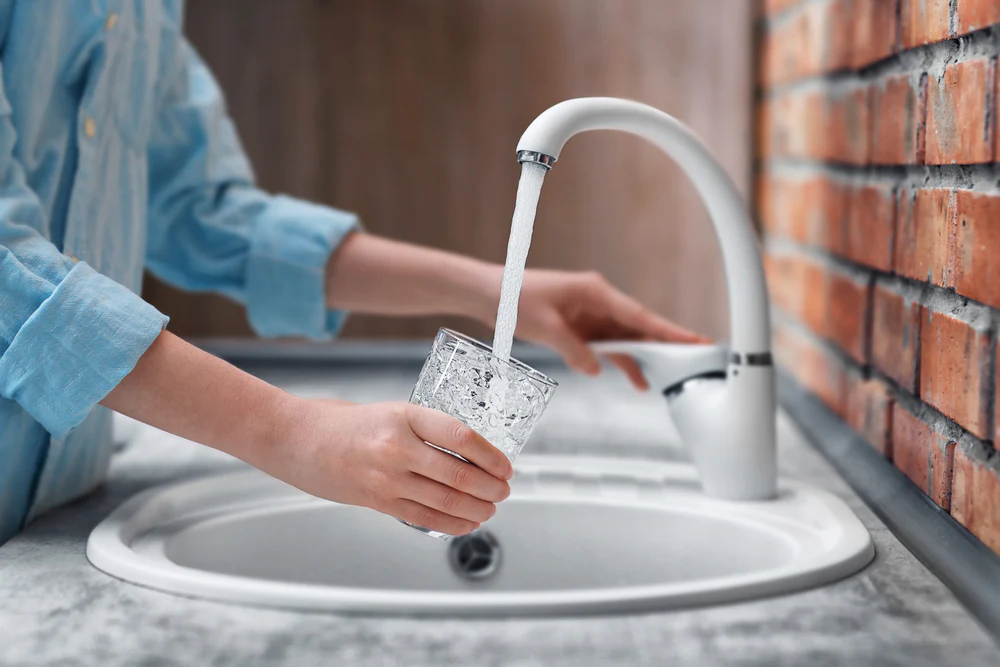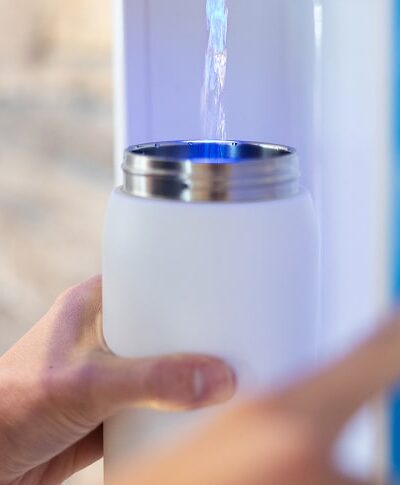On a global scale, reports reveal humans currently buy one million plastic bottles per minute, a large part of which comes from the U.S. It seems unlikely there would be a slow down of use anytime soon, but However, there have been a few recent milestones that show things might slowly be changing direction.
One of the leaders in this push for plastic-free is California. It’s led the way in reducing plastic waste as a state. In 2016, voters approved the statewide single-use carryout ban. While stores are allowed to provide reusable grocery bags or recycled paper bags for a small fee to customers, the idea is to have people bring their own reusable bags to the store rather than throwing plastic bags every time they head home from the store. As of January 1st of this year, a state law went into effect to limit the use of single-use plastic straws for dine-in restaurants and only distribute them at the request of customers.
Now one of California’s major airports, San Francisco International (SFO), has followed suit and banned the sale of single-use plastic water bottles as of August 2019. It’s the first policy of its kind at a major U.S. airport. It eliminates the sale from restaurants and vending machines, as well as stores and kiosks at an airport, which served a record of well over 55 million passengers in 2017.
The decision comes five years after the city of San Francisco passed an ordinance that banned the sale of plastic water bottles on city-owned property. It also reflects the airport’s own initiatives to reduce landfill waste and carbon emissions by 2021. These actions are a positive move in the right direction since it’s estimated that 12 billion metric tons of plastic will end up in landfills by 2050. Although recycling bins are commonplace now, especially airports, statistics say that 91% of all plastic is not recycled. By 2020, over half a trillion plastic bottles will be sold, none of which will come from SFO.
While this is the first airport to ban the sale of single-use plastic water bottles, other airports are working on similar strategies to reduce the amount of plastic waste that ends up in their trash bins every day. It’s an optimistic move for environmentalists, but leave some consumers with questions. Before travelers become too concerned with how they’ll stay hydrated, a solution is already in place.
SFO has more installed more than 100 hydration stations (with more to come) that dispense free, filtered water. This trend has begun to show up at airports across the country at a greater rate when drinking fountains used to be the only source of free (yet unfiltered) water. Travelers can pack empty reusable water bottles or containers to fill up at the hydration station most conveniently located to them. The use of water cooler dispenser This reduces the amount of plastic used at the airport and becomes more cost-effective for the traveler. Rather than buying bottled water at markup prices that can reach over $4 a sale, people can now have clean water that’s ready on-demand. The ban of single-use plastic water bottles is one of the many ways SFO is doing its part for the planet and implementing effective change for sustainability.
How a Plastic Water Bottle Ban Benefits Travelers
For millions of travelers, buying bottled water is commonplace when they don’t want to drink soda or other beverages to stay hydrated for long flights. However, this progressive step toward sustainability benefits travelers in more ways than one. First, it gives them access to free, filtered water. While SFO is the first airport to ban the sale of single-use plastic water bottles, it’s not the first airport to have hydration stations. These are found frequently at most major airports. Rather than buying individual water bottles at every layover along the way, travelers are now packing their own reusable water bottle to fill up with fresh water on-the-go.
Drinking water fountains are still available, although many have switched to hydration stations due to the poor quality of the water. Many cities have been dinged for not having safe water for its consumers, with problems of lead, chemicals, and pollutants found at high levels in the water. Hydration stations offer water free of contaminants that people can feel comfortable drinking. This is a step in the right direction to reduce the amount of plastic waste while giving people a healthy alternative.
Since bottled water will no longer be available for sale, more hydration stations are on the way to better serve the public. It’s noted the immediate effect of banning bottled water sales at SFO will eliminate approximately 4 million plastic water bottles sold each year. Grabbing a bottle of water is now replaced with the convenience of stopping at one of the hundreds of stations located throughout the airport to fill up a reusable container.
The airport has also installed liquid pour-out stations to allow travelers to head through TSA without incident and fill up on the other side. Although it may be quite the change for some, for many who already carry reusable water bottles with them, it’s a regular occurrence and welcome initiative.
Unique Quality of FloWater Hydration Stations
Hydration stations are an improved source of water above drinking fountains. Fountain spouts often don’t have a stable flow of water, are grimy, and can take a long time to fill up a regular water bottle. Hydration stations solve those problems by having a recessed nozzle, so the mouth of the container is nowhere near the water spout. Additionally, water stations are quicker than the flow of the average drinking fountain. While a great benefit to travelers, there is still a difference when it comes to FloWater compared to other water stations.
First is the taste. FloWater implements a stringent filtering process to ensure all contaminants, odors, and unpleasant tastes are removed to leave nothing behind but purified water. Lastly, the unique coconut carbon filter finish leaves a crisp taste by removing any last particles.
The second difference is the water temperature. Most hydration stations water comes out lukewarm. Water is more refreshing to drink when it chilled, and FloWater hits the optimal drinking temperature of 42 degrees at its stations.
Third, FloWater is specifically designed to dispense water faster than the average drinking fountain or water cooler. FloWater is 45 seconds faster, to be exact. This increased speed helps when serving large crowds, such as the busy areas of an airport. People who are making quick connections can take time to fill up their water bottles before boarding their next plane. It’s convenient and fast, two things all travelers want when flying.
The FloWater Water Refill Station also replenishes automatically and holds up to seven gallons of filtered water at all times. Its small setup fits easily into any location and can serve a high capacity of people with ease. Airports installed hydration stations as an option for travelers, in addition to other hydration stations and drinking fountains already in place. It encourages people to stay hydrated when flying and limit their use of plastic.
It provides a healthy alternative to buying sugary sodas and juices that can add up in cost and doesn’t do as much for hydration as drinking pure water. Accessibility is a key factor for travelers. Having these refill stations readily available in airports will encourage people to drink more water because it tastes good, is good for them, and doesn’t require buying plastic bottles.
What The Future Holds
With an airport as significant as SFO making this monumental step toward eliminating the use of single-use plastic water bottles by banning their sale, it’s only a matter of time before other airports and large public organizations follow suit. Los Angeles International Airport (LAX) is strategizing its own sustainability plan and, hopefully, will take a cue from SFO. From there, it could provide the push needed for other public venues to jump on the bandwagon and establish their own sustainable solutions as well.
With the amount of single-use plastic water bottles sold at other large capacity events and areas, it would make quite the difference if they, too, banned the sale of single-use plastic water bottles and replaced them with hydration stations. More and more industries are starting to see the advantages of fulfilling crowd wants and needs, while also benefiting from less waste from plastic bottles.
As eco-friendly practices continue to change and evolve, what seems novel now will become everyday habits. With purposeful planning comes great change that can have long-lasting positive effects on the environment and how we handle plastic going forward. From the introduction of recycling bins to the continual decline of using styrofoam food containers, this is the next step in how we can help the planet, one plastic water bottle at a time.
Sources:
https://www.forbes.com/sites/trevornace/2017/07/26/million-plastic-bottles-minute-91-not-recycled/
https://www.flysfo.com/media/press-releases/sfo-served-all-time-record-558-million-passengers-2017




